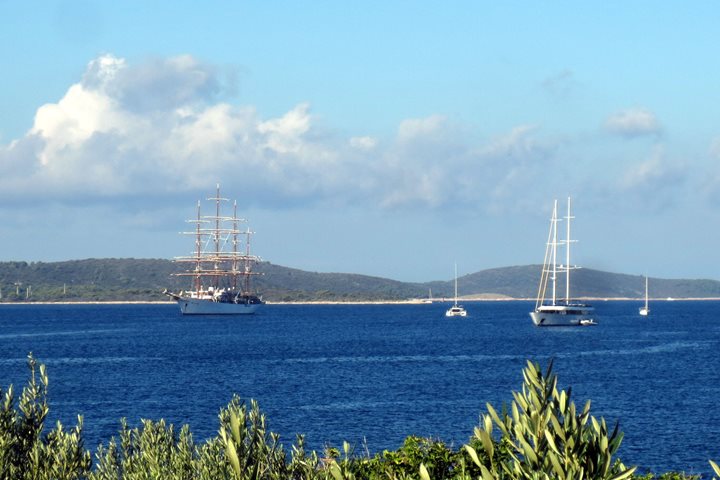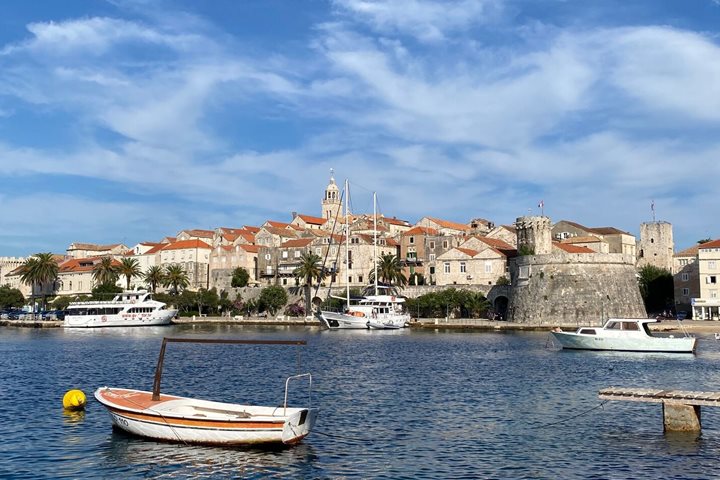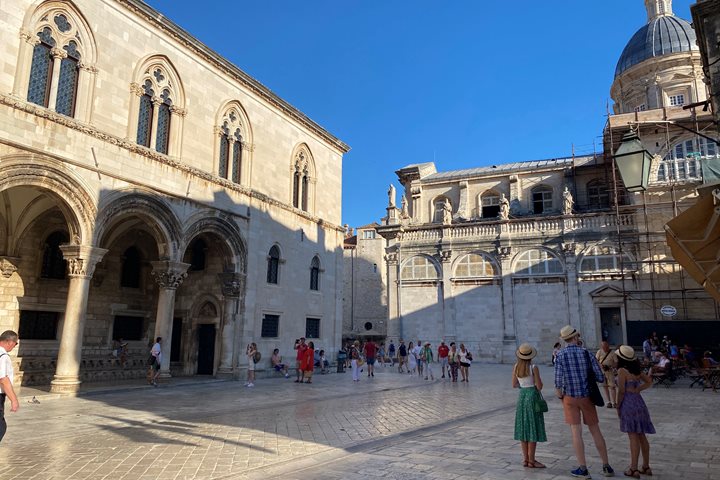“I saw before me Troy in miniature
A slender copy of our massive tower”
- Virgil, The Aeneid (Book 111)
A drive through the Albania countryside along the shores of Lake Butrint took us to the very gates of the ancient Greek and Roman city of Butrint that Virgil’s hero Aeneas stood below. Located at the southern end of the UNESCO World Heritage site, the circuit walls of the citadel date back to at least the 4th century B.C. but the sanctuary dedicated to Asclepius, the god of healing, may be centuries older. Our tour started at the small Greek theater sandwiched between the Roman forum and the later temple of Asclepius. It was blissfully shaded beneath the bay laurel, acorn, eucalyptus and pine trees that carpet the site, and the early morning air was filled with songs of various birds that make their home here. We followed the trail through the forest and on to the Roman gymnasium and villa that fronted onto the canal. We explored the early Byzantine round, colonnaded baptistery and 5th century A.D. basilica before walking around to the Lake and Lion Gates that afford one entry up on to the top of the citadel. The view from the top and the little museum was worth the hike!
On our way back to the ship we made a stop at the Ottoman Fortress of Lekursi, which is situated on top of the hill above Sarandë where the Sea Cloud was docked. 360-degree views of the Corfu Channel, Lake Butrint, and the lush farms and mountains on the Albanian/Greek border awaited us at the top of the narrow switchbacks that our drivers negotiated with great skill! We were expecting a few snacks at the top but what awaited us was a delicious buffet of local mussels, dolmades, pickled cheese and eggplants, farm fresh feta, and sweet cherry tomatoes – a veritable feast!
During lunch the Sea Cloud pulled back out into the Corfu Channel and headed north to Porto Palermo Castle built by Ali Pasha Tepelena in the early 19th century. Known as the Muslim Bonaparte, Ali Pasha was a ruthless ruler who brought prosperity to the region building a network of roads and fortresses. The passageways and rooms of the former harem, reception and guard-rooms were magically lit with tea lights to guide us to the stairs that led to the roof. Atop the ramparts we were treated to a special wine reception accompanied by folkloric flute music and dancing by two young members of the Çipini dance ensemble, who were beautifully turned out in their hand-stitched embroidered traditional costumes of the region. A very special evening was had by all.







